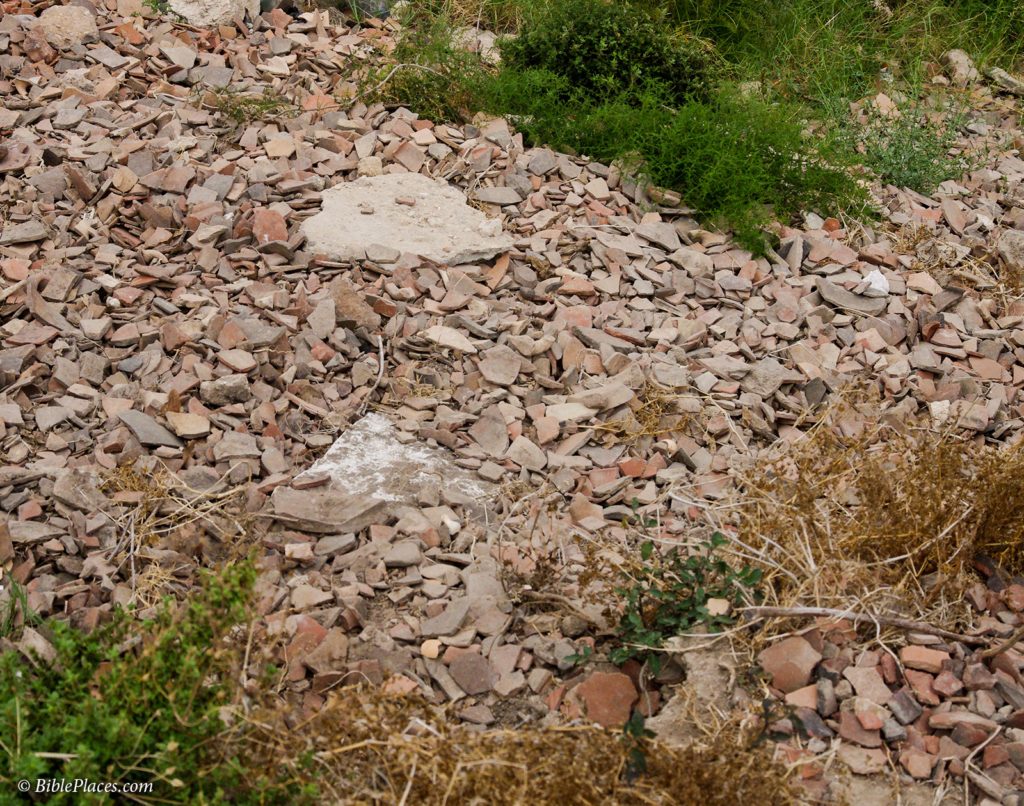Pottery is the most abundant find in any archaeological excavation. Because everyone used pottery in antiquity, because pottery is so fragile and required frequent replacement, and because pottery is impervious to deterioration from environmental conditions, pottery can be found at every ancient site.
At each dig, potsherds are collected, cleaned and examined. Pottery can tell us about a site’s occupation history, it helps us to date the associated strata and structures, and it can reveal such things as relations (trade or otherwise) between sites and regions.
For decades, the standard reference work has been Ruth Amiran’s Ancient Pottery of the Holy Land from Its Beginnings in the Neolithic Period to the End of the Iron Age (New Brunswick: Rutgers University Press, 1970). This volume is quite useful, although, after nearly 50 years, a refresh is needed. Rumors have circulated for some time that an update, to be edited by Seymour Gitin, was being prepared, but the apparent delay led some to wonder secretly whether there was any truth to the rumors.
Yesterday, they were proven true.
These two volumes offer a comprehensive corpus of ceramic forms and their typological development organized according to period, geographical region, and cultural tradition. The focus of each chapter is on the most characteristic pottery types and decorative motifs selected from a wide range of sites. Unique in scope, this publication presents a wide range of ceramic types accompanied by specially prepared pottery plates and color photos illustrating thousands of forms. A classic reference work, it serves as an essential resource for archaeologists and other scholars and students of ancient Near Eastern studies. Volumes covering the Neolithic and Chalcolithic periods and the Bronze Age are currently in preparation.
808 pp., 328 plates with 3,393 images; 34 color photos illustrating 277 vessels; hard cover 27.6 x 21cm.
Volume 1
- Iron Age I: Northern Coastal Plain, Galilee, Samaria, Jezreel Valley, Judah, and Negev, by Amihai Mazar
- Iron Age I: Philistia, by Trude Dothan and Alexander Zukerman
- Iron Age I: Transjordan, by Larry G. Herr
- Iron Age IIA–B: Northern Coastal Plain, by Gunnar Lehmann
- Iron Age IIA–B: Northern Valleys and Upper Galilee, by Amnon Ben-Tor and Anabel Zarzecki-Peleg
- Iron Age IIA–B: Samaria, by Ron E. Tappy
- Iron Age IIA–B: Judah and the Negev, by Ze’ev Herzog and Lily Singer-Avitz
- Iron Age IIA–B: Philistia, by Seymour Gitin
- Iron Age IIA–B: Transjordan, by Larry G. Herr
- Iron Age IIC: Northern Coast, Carmel Coast, Galilee, and Jezreel Valley, by Ayelet Gilboa
- Iron Age IIC: Samaria, by Ron E. Tappy
- Iron Age IIC: Judah, by Seymour Gitin
- Iron Age IIC: Northeastern Negev, by Itzhaq Beit-Arieh and Liora Freud
- Iron Age IIC: Philistia, by Seymour Gitin
- Iron Age IIC: Transjordan, by Piotr Bienkowski
- Iron Age I–II Phoenician Pottery, by Ephraim Stern
- Iron Age I–II Cypriot Imports and Local Imitations, by Ayelet Gilboa
- Iron Age I–II: Greek Imports, by Jane C. Waldbaum
- Iron Age IIC Assyrian-Type Pottery, by Ephraim Stern
- Iron Age IB–IIC Egyptian and Egyptian-Type Pottery, by Eliezer D. Oren
- Persian Period, by Ephraim Stern
- Persian Period Imports, by Renate Rosenthal-Heginbottom
- Hellenistic Period, by Andrea M. Berlin
- Hellenistic Period Imported Pottery, by Renate Rosenthal-Heginbottom
